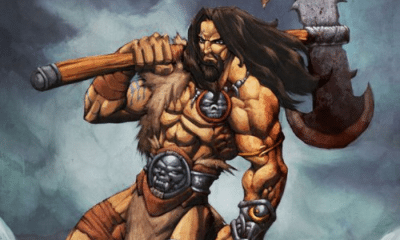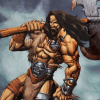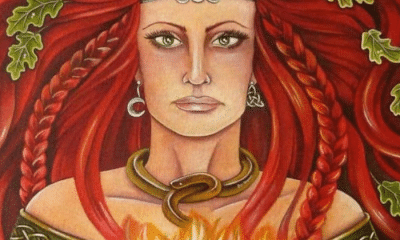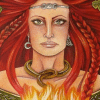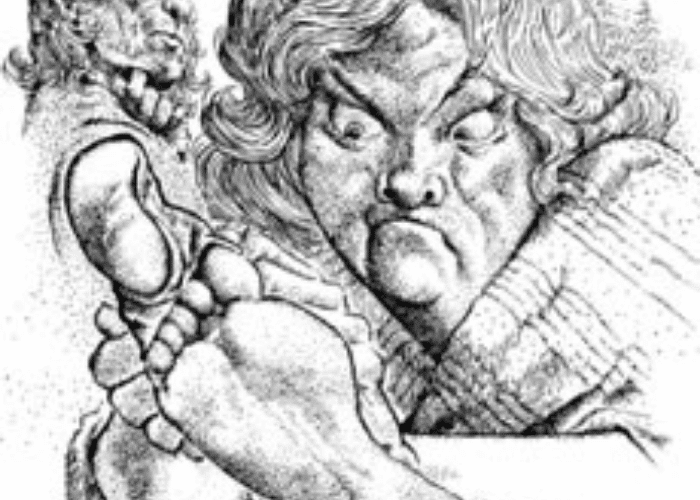
Irish
Gwydion: The Trickster of Welsh Legends
Gwydion: The Trickster of Welsh Legends
Gwydion was a hero, trickster, and magician of Welsh lore, but how well do you really know his story? Keep reading to learn more about the cunning mage of Wales!
Gwydion is one of the most unique characters in Welsh mythology.
He was a heroic leader who defeated an enemy king single-handedly. He was a trusted advisor who guided his nephew into power.
He could also be an untrustworthy and even dangerous character. He enabled the abduction of an innocent woman, used deceit to get his way, and may have even fathered his own famous nephew.
Gwydion was a character full of contradictions whose magical powers were only rivalled by his quick wit and his keen mind.
So how did such a unique figure enter into Welsh mythology? Historians believe Gwydion may have come from many different traditions!
The Adventures of Gwydion
Many of the adventures of Gwydion center around his relationship with his nephew, Lleu Llaw Gyffes.
Gwydion and his brother Gilfaethwy were the nephews of Math fab Mathonwy, the king of Gwynedd. Math lived with a curse that, unless he was at war, he would die if his feet were not always held in the lap of a virgin.
His foot holder was a young woman named Goewin. Gilfaethwy became obsessed with the girl and asked his sly brother to devise a way to get her away from their uncle.
Gwydion used magic to steal supernatural pigs from a neighboring king, Pryderi. This caused the kingdoms to go to war, so Math fab Mathonwy was able to leave his foot-holder to fight.
Pryderi was eventually defeated by Gwydion and the war ended. During the fighting, however, Gilfaethwy had abducted Goewin.
Math was so furious when he learned of this that he turned the two brothers into mated pairs of animals for three years. Eventually, he released them from his magic and began his search for a new foot holder.
Gwydion suggested his sister, Arianrhod. When being questioned by Math, however, she gave birth to a large baby boy named Dylan.
As Arianrhod ran from the room in shame, Gwydion noticed something small fall to the floor behind her. This was another child, which Gwydion raised on his own.
Some years later, Gwydion went to Arianrhod’s home to present her son to her. Still shamed, she put a tynged, or curse, on the child that only she would be able to name it.
Gwydion wanted his nephew to have a name, however, so he tricked his sister into bestowing one.
He disguised the child and himself as cobblers. When the boy threw a stone at a bird, Arianrhod declared that the one with fair hair had a skillful hand to throw so well.
Gwydion announced that the child would be called Lleu Llaw Gyffes, “The Fair-Haired One with the Skillful Hand.”
Furious that she had been tricked, Arianrhod placed another tynged on the child that he would never receive arms from anyone but her. Gwydion again tricked her, so she cursed the boy a third time that he would never have a human wife.
Gwydion left his sister and returned to Math fab Mathonwy to find a solution. The two of them used their magic to make a woman out of flowers, Blodeuwedd, for Lleu Llaw Gyffes to marry.
Blodeuwedd, however, was not a faithful wife. She had an affair with a man named Gronw Pebr and they plotted to kill her husband.
Lleu Llaw Gyffes was magically protected, however. He could not be killed during the day or at night, naked or clothed, while riding or while walking, indoors or outdoors, or by any lawfully made weapon.
Eventually, Gronw Pebr deduced that he had to kill Lleu Llaw Gyffes at dusk while he was wrapped in a net with one foot in a cauldron and the other on a goat with a spear forged for a year during the hours when everyone besides the smith was at mass.
Remarkably, Blodeuwedd managed to get Lleu Llaw Gyffes into this position. Rather than dying, however, Lleu Llaw Gyffes transformed into an eagle and flew away.
Gwydion tracked him to an oak tree and lured him down with a lyrical poem. Reverting him to human form, Gwydion and Math were able to nurse him back to health.
When he had recovered, Lleu Llaw Gyffes returned to his home to reclaim it from his unfaithful wife and her murderous lover.
Gronw was soon overcome and asked that he be allowed to put a stone between himself and Lleu Llaw Gyffes’s spear. Gwydion’s nephew agreed, but threw the weapon with such force that it penetrated the stone and killed Gronw Pebr anyway.
Blodeuwedd was cornered by Math. He transformed her into an owl and made her eternally hated by all other birds.
Lleu Llaw Gyffes took his rightful place on his throne. He and his uncle continued to enjoy adventures together.
My Modern Interpretation
Gwydion is one of the great heroes and magicians of Welsh folklore, but most historians see similarities between him and characters from outside of Wales.
Some have interpreted him as a version of Woden, the chief of the Germanic gods. Although their legends are quite different, their use of magic and association with specific birds and weapons is similar.
More compelling is an identification that is much closer to Wales. Many historians compare him to the Irish deity the Dagda.
Both Gwydion and the Dagda had somewhat mysterious origins. Gwydion was named as one of the many children of an unknown goddess called Don, who was almost certainly from the same source as the similarly enigmatic Danu in Irish mythology.
Both Gwydion and the Dagda were not best known as rulers in their own right, but as advisors and companions to more famous kings. While each had their own lands, their stories largely involved defending the lands of a younger male relative.
In the case of Gwydion this was Lleu Llaw Gyffes, while the Dagda assisted Lugh. Both their names and their stories make it likely that the Irish and Welsh kings had a common origin.
The story of Gwydion may have also inspired another famous story that came out of Wales.
Their use of magic to assist a young, orphaned king draws obvious comparisons between Gwydion and the character of Merlin from Arthurian legend. Both changed their forms and both used trickery to give their brother access to a woman he desired.
Some aspects of Gwydion’s story may have also influenced the character of King Arthur himself. Some accounts suggest that he was the father of his combative sister’s children, bringing to mind the relationship between Arthur and Morganna in some accounts of the legends.
One thing that differentiates Gwydion from all these other figures, however, is his identification as a trickster.
More than any of the characters he is compared to, Gwydion uses deceit, wordplay, and cunning. In addition to his magical prowess, his clever mind is his greatest weapon.
This may simply be an invention of Welsh storytellers, but there is some evidence that another source may have gone into creating the character.
Gwydion was associated with nighttime and the stars, something more common among tricksters and untrustworthy characters than heroic figures. The Milky Way is still called Caer Wydion, the name given to Gwydion’s keep, in Welsh.
It is possible, then, that Gwydion was an amalgamation of more than one character. A more wise and heroic type, similar to the Dagda, combined with a cunning trickster to create one of Welsh folklore’s most distinctive characters.
In Summary
Gwydion is one of the most famous figures in Welsh folklore.
He is best remembered for his involvement in the life of his nephew, and possible son, Lleu Llaw Gyffes. After raising the unwanted child, he tricked his spiteful and shamed sister into giving the boy his name and his first weapons.
Gwydion and his uncle, Math fab Methanwy, also used magic to create a wife for Lleu Llaw Gyffes. Unfortunately, she proved to be unfaithful and attempted to arrange her husband’s murder.
Gwydion again used his magic to save his nephew and restore him to his throne. While he is mentioned in other stories and poems, his use of magic and cunning to help Lleu Llaw Gyffes throughout his life is his most notable tale.
Historians have found several parallels between Gwydion and other mythological figures, most notably the Dagda of Ireland. They also believe that parts of his story may have influenced Arthurian legends, particularly the character of Merlin.
His affinity with trickster-type gods, however, brings these identifications into question. It is likely that the character of Gwydion combined several different influences to make a unique magical hero of Wales.


